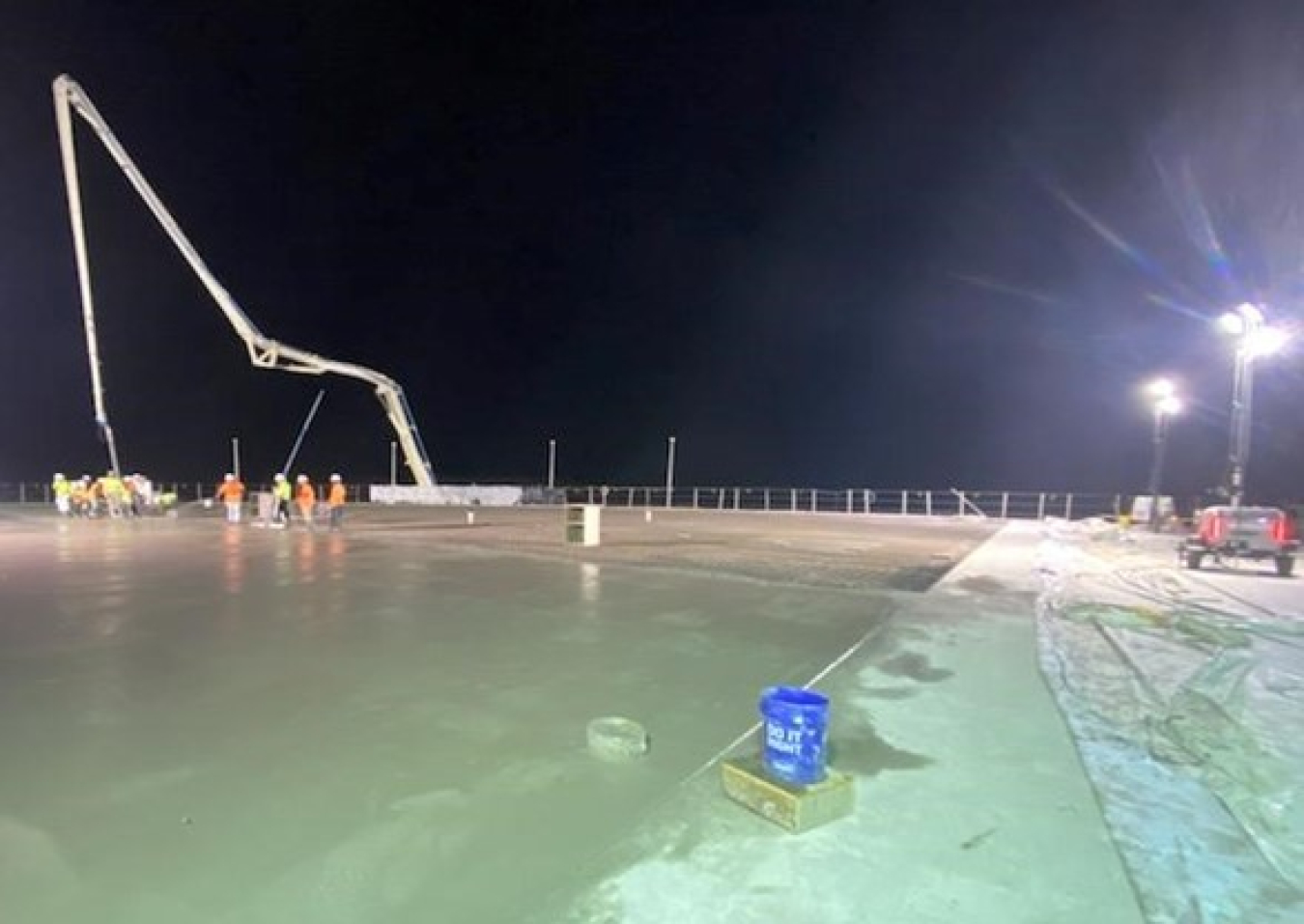The liquid waste contractor at Savannah River Site (SRS) met an EM 2022 priority with the recent completion of concrete placements on Saltstone Disposal Unit (SDU) 9.
Office of Environmental Management
October 11, 2022
AIKEN, S.C. − The liquid waste contractor at Savannah River Site (SRS) met an EM 2022 priority with the recent completion of concrete placements on Saltstone Disposal Unit (SDU) 9.
The construction team for Savannah River Mission Completion (SRMC) performed the work ahead of schedule and under budget.
SRMC SDU Project Manager Tim Hammond praised the effort of the liquid waste construction team for safely meeting the priority within the specified timeframe.
“Completing our concrete placements on SDU 9 is another major accomplishment for the overall SDU Program,” Hammond said. “These units continue to be a success story, and I am proud to be part of a great team. Achieving this priority while moving forward with other construction projects demonstrates our team’s dedication to doing our job — and doing it safely and doing it well.”
SDUs are massive, 34-million-gallon units that hold a grout that’s a mixture of decontaminated salt solution (DSS) combined with dry materials called slag and fly ash. This grout hardens like cement. SDUs are the final disposal location for the decontaminated waste stream and are integral to closing the remaining liquid waste tanks at SRS.
DOE-Savannah River Assistant Manager for Waste Disposition Jim Folk said construction of SDUs is crucial to the liquid waste mission.
“With the Salt Waste Processing Facility (SWPF) processing rates continuing to increase, these larger SDUs will be needed to keep up with the increased output,” Folk said.
SWPF has processed more than 900,000 gallons of waste since July.
An SDU closely resembles a large, cylindrical water tank that sits on the ground. Construction includes the placement of 25 wall sections, 208 support columns and seven roof sections — all made of concrete. Altogether, more than 20,000 cubic yards of concrete is needed to build each SDU, using approximately 700,000 total labor hours.
Before the SDU is ready to receive DSS, several additional tasks must be performed. Among the major work yet to be performed in SDU 9 is wrapping the SDU in high-strength cable, spraying it with concrete and installing top-of-tank pipes and electrical wiring.
Afterward, the tank will be tested for leaks and final construction punch-list items before being given clearance to operate.
Remaining tasks are expected to be completed within the next year, ahead of schedule. The first large-volume SDU built at SRS — SDU 6 — began receiving grout in 2018 and the second began receiving grout in October last year.
SDU 9 will be the fourth mega-volume unit to be built at SRS, with construction of units 10, 11 and 12 just getting underway. SRS has five smaller SDUs that hold about 3 million gallons each.
SRMC is also constructing SDU 8, entering the final stages before the new unit is tested for leaks.
To be most efficient, SDUs are being built “in series.” As a construction team finishes its specific task on one SDU, the group moves to another SDU and performs the same work. In-series construction saves on demobilization costs and capitalizes on ordering materials and equipment in bulk.
To receive the latest news and updates about the Office of Environmental Management, submit your e-mail address.

